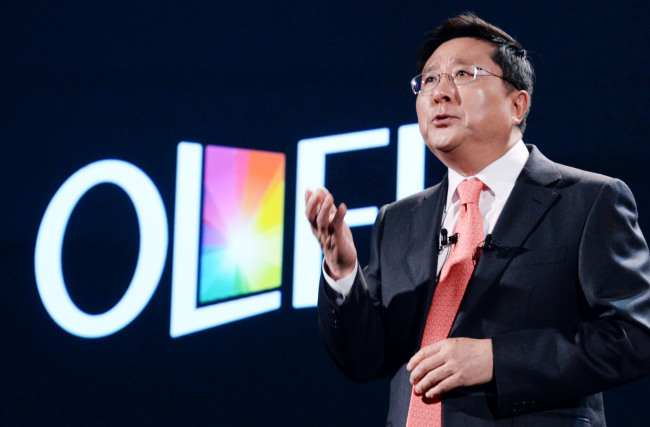LG
LG Display to invest W8tr in OLED production
[THE INVESTOR] LG Display announced on July 25 that it would spend 7.8 trillion won (US$7 billion) in adding new manufacturing facilities dedicated to OLED displays for both TVs and smartphones at its complexes in Paju and Gumi.
Of the total investment, 2.8 trillion won will be spent to build Gen 10.5 OLED manufacturing facilities while 5 trillion won will be used for new production facilities for mid- and small-sized plastic OLED.
 |
Han Sang-beom, CEO of LG Display. |
The new round of investment is in addition to 7.2 trillion won which has been allotted for the construction of the firm’s P10 plant and E4-2 line, from which the firm will roll out OLEDs for TV, and the E5 and E6 manufacturing lines for smartphone POLED displays.
“The company has decided to make the additional investment for OLEDs for TV and POLED as it believes the OLED display technology is our future,” said Han Sang-beom, CEO of the display manufacturer.
“The new investment will help the firm to make a big leap forward,” he added.
No display maker in the world has yet to roll out the Gen 10.5 OLED panel, which is 1.8 times bigger than the existing Gen 8 panel, one of the most common panel sizes.
The addition of the new POLED production lines will help LG Display to increase its foothold in the burgeoning smartphone OLED sector.
Apple’s next-generation iPhone will be equipped with OLED displays supplied solely by Samsung Display.
LGD, which had failed to clinch a supply deal with Apple reportedly due to its subpar smartphone OLED production capabilities, aims to become the second OLED supplier for the US tech giant.
With the new investment, LGD will be able to churn out 65,000 Gen 6 POLED panels, which are the equivalent of 120 million 6-inch smartphone displays.
LG said that POLEDs, which are highly flexible, will let smartphone makers to achieve a design breakthrough by rolling out bendable, rollable and foldable devices.
Citing industry data, LGD forecast that the shipment of POLED smartphone displays will increase from 120 million units in 2017 to 370 million in 2020.
By Kim Young-won (wone0102@heraldcorp.com)








